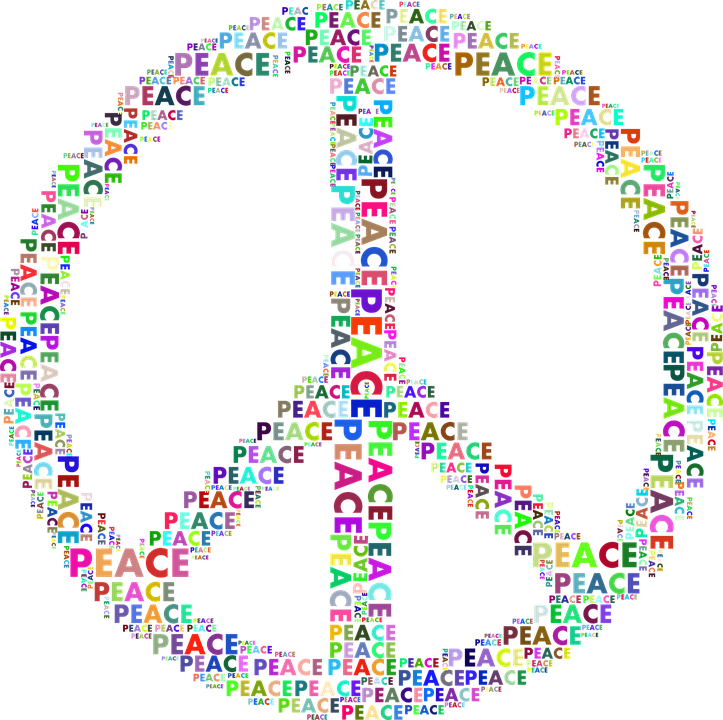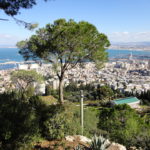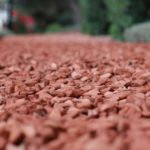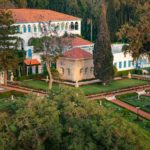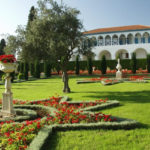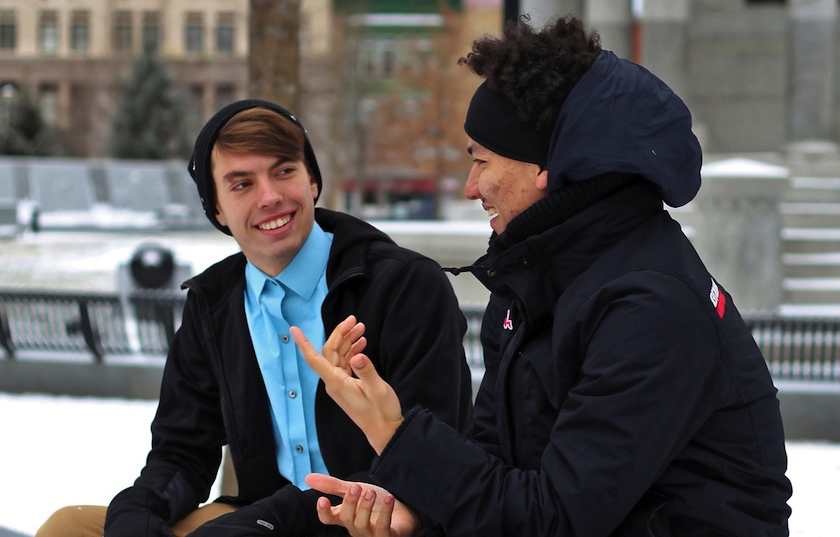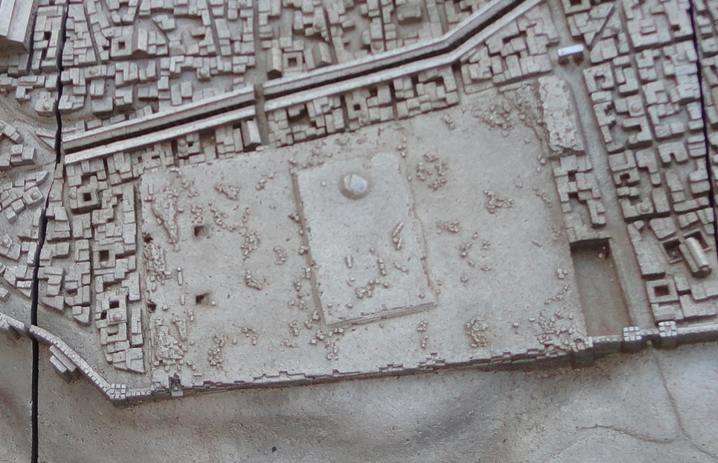
Suriy-i-Haykal: Restoring the Temple
 As we have seen Bahá’u’lláh does not throw away the past; rather Bahá’u’lláh re-weaves the past in new forms in his teachings. The Temple of course refers to the ancient temple of Judaism in Jerusalem. The Temple Mount: the place where the Temple once stood, before it was destroyed by the Romans, remains the most sacred site of Judaism. The same site is now also sacred to Muslims – being the site of the Al Aqsa Mosque. The Temple and its restoration also features in ancient biblical prophecy associated with the return of the prophet or Messiah.
As we have seen Bahá’u’lláh does not throw away the past; rather Bahá’u’lláh re-weaves the past in new forms in his teachings. The Temple of course refers to the ancient temple of Judaism in Jerusalem. The Temple Mount: the place where the Temple once stood, before it was destroyed by the Romans, remains the most sacred site of Judaism. The same site is now also sacred to Muslims – being the site of the Al Aqsa Mosque. The Temple and its restoration also features in ancient biblical prophecy associated with the return of the prophet or Messiah.
In New Testament teachings, the concept of a physical temple is transmuted into a temple which is comprised both of Jesus himself and the body of the believers.
… you are no longer foreigners and strangers, but fellow citizens with God’s people and also members of his household,20 built on the foundation of the apostles and prophets, with Christ Jesus himself as the chief cornerstone.21 In him the whole building is joined together and rises to become a holy temple in the Lord.22 And in him you too are being built together to become a dwelling in which God lives by his Spirit. [Ephesians 2:19-22]
In the “Suriy-i-Haykal” – the “Tablet of the Temple” – however again the concept is “made new” – and extended in new directions. In using the Temple theme, Bahá’u’lláh makes the implicit claim to be the fulfilment of messianic expectations of past religions – a claim explicitly affirmed by the content of the text.
In the Suriy-i-Haykal, he describes the new temple he is building in some detail – but unlike the ancient biblical descriptions of physical dimensions and material compositions; Bahá’u’lláh addresses the temple in terms of its divine and human qualities in both mystical and explicit language.
Shoghi Effendi notes that Bahá’u’lláh had the Suriy-i-Haykal written in the form of a pentacle (representing the human form) – combining it with letters he had written to the kings, rulers and religious leaders and tablets addressed to the people of the world – announcing his mission. This combination is itself significant – as the messages sent by Bahá’u’lláh re-enacts the messages sent in ancient times by the prophet Muhammad to the rulers and religious leaders such as the Roman Emperor in Constantinople, the Patriarch of Alexandria in Egypt and the Persian King of Kings. In God Passes By, Shoghi Effendi records that Bahá’u’lláh identified the Suriy-i-Haykal with the temple of man and that:
when addressing the followers of the Gospel in one of His Tablets, with the “Temple” mentioned by the Prophet Zechariah[1]
In the Suriy-i-Haykal, Baha’u’llah openly proclaimed his mission. In it we find the beautiful allegory of the maiden:
While engulfed in tribulations I heard a most wondrous, a most sweet voice, calling above My head. Turning My face, I beheld a Maiden—the embodiment of the remembrance of the name of My Lord—suspended in the air before Me. So rejoiced was she in her very soul that her countenance shone with the ornament of the good pleasure of God, and her cheeks glowed with the brightness of the All-Merciful. Betwixt earth and heaven she was raising a call which captivated the hearts and minds of men. She was imparting to both My inward and outer being tidings which rejoiced My soul, and the souls of God’s honoured servants.
Pointing with her finger unto My head, she addressed all who are in heaven and all who are on earth, saying: By God! This is the Best-Beloved of the worlds, and yet ye comprehend not. This is the Beauty of God amongst you, and the power of His sovereignty within you, could ye but understand. This is the Mystery of God and His Treasure, the Cause of God and His glory unto all who are in the kingdoms of Revelation and of creation, if ye be of them that perceive.[2]
Here is a little of what Baha’u’llah says to the temple:
O Eyes of this Temple! Look not upon the heavens and that which they contain, nor upon the earth and them that dwell thereon, for We have created you to behold Our own Beauty …[3]
O Ears of this Temple! Purge yourselves from all idle clamour and hearken unto the melodies of your Lord. …[4]
O Living Temple! We have, in very truth, appointed Thee to be the sign of My majesty amidst all that hath been and all that shall be, and have ordained Thee to be the emblem of My Cause betwixt the heavens and the earth, through My word “Be”, and it is! …[5]
In the Suriy-i-Haykal, we also find an early instance of the clear prohibition of religious violence instituted by Bahá’u’lláh:
Beware lest ye shed the blood of anyone. Unsheathe the sword of your tongue from the scabbard of utterance, for therewith ye can conquer the citadels of men’s hearts. We have abolished the law to wage holy war against each other. God’s mercy, hath, verily, encompassed all created things, if ye do but understand. Aid ye your Lord, the God of Mercy, with the sword of understanding. Keener indeed is it, and more finely tempered, than the sword of utterance, were ye but to reflect upon the words of your Lord.[6]
Bahá’u’lláh concludes his theme with the following:
Thus have We built the Temple with the hands of power and might, could ye but know it. This is the Temple promised unto you in the Book. Draw ye nigh unto it. This is that which profiteth you, could ye but comprehend it. Be fair, O peoples of the earth! Which is preferable, this, or a temple which is built of clay? Set your faces towards it.[7]
* * *
Image: Model of the ruins of the temple on the Temple Mount in the city of “Aelia Capitolina”: i.e. Jerusalem. The Romans renamed the city of Jerusalem after they destroyed it in 70 CE. In 132 CE the entire Jewish population was expelled from the city after a further revolt. (Photo of model in the Tower of David Museum).
(This article is the 92nd in a series of what I hope will be 200 articles in 200 days for the 200th anniversary of the birth of Bahá’u’lláh. The anniversary is being celebrated around the world on 21 and 22 October 2017, The articles are simply my personal reflections on Bahá’u’lláh’s life and work. Any errors or inadequacies in these articles are solely my responsibility.)
